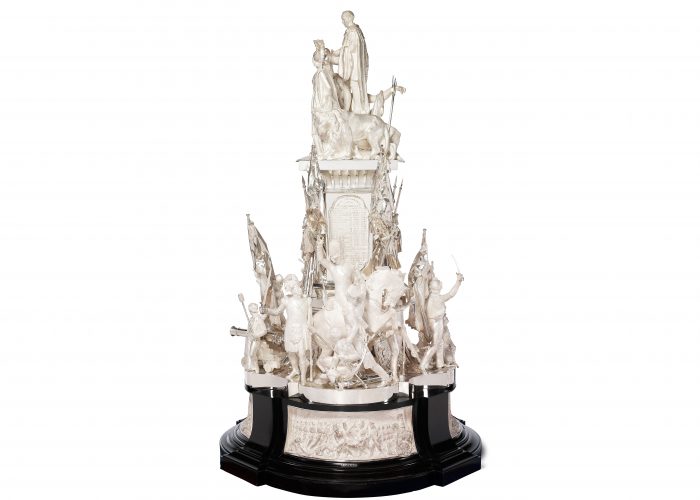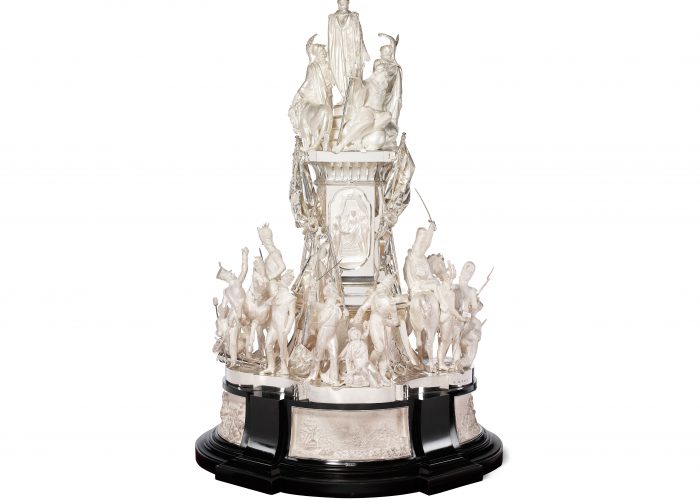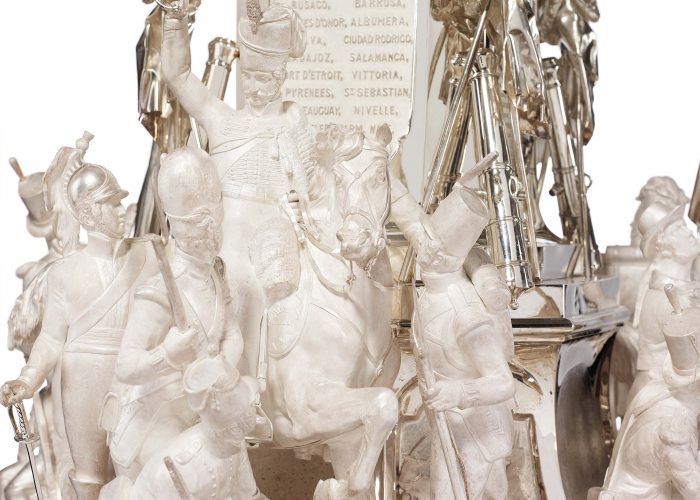The Goodwood Trophy
This magnificent trophy was presented by the British Army to the 5th Duke of Richmond. It was given in gratitude for his campaign to recall the efforts of servicemen in the wars against Republican and Napoleonic France.
After a medal had been awarded to all ranks who served at Waterloo, many soldiers felt their long and arduous service in other theatres of war (1793-1814) required recognition. The Duke of Wellington was opposed to this. After much despair and publicity, an official campaign was launched in 1840, to retrospectively award a General Service Medal to all sailors, marines and soldiers who had fought and survived these two French wars and the Anglo-American War of 1812.
The handsome medal, with Queen Victoria’s head on the obverse, was eventually issued in 1847. An inscribed silver bar for each action (29 in all) in which the serviceman had participated was attached to the white and blue or red and blue silk medal ribbon, for the Royal Naval and Army recipients respectively.
A subscription had been raised by the army to acknowledge and thank Richmond. Senior officers paid a pound, private soldiers, a penny, which reached the 1,500 guineas required to have the trophy made. It was crafted by Hunt and Roskell of Bond Street and on 21 June 1851, in the presence of 250 veterans, it was presented to the Duke of Richmond at a grand dinner held in the old Almack’s Assembly Rooms in London.
The trophy has a statue of Richmond directing the attention of Britannia to Mars and Neptune, while she holds the medal in her hand. It resides in Goodwood House.
-
Use this image
You can download and use the high resolution image for use in a non-profit environment such as a school or college, but please take note of the license type and rights holder information below
- Rights Holder: Courtesy of the Trustees of the Goodwood Collection
- License Type: All Rights Reserved













